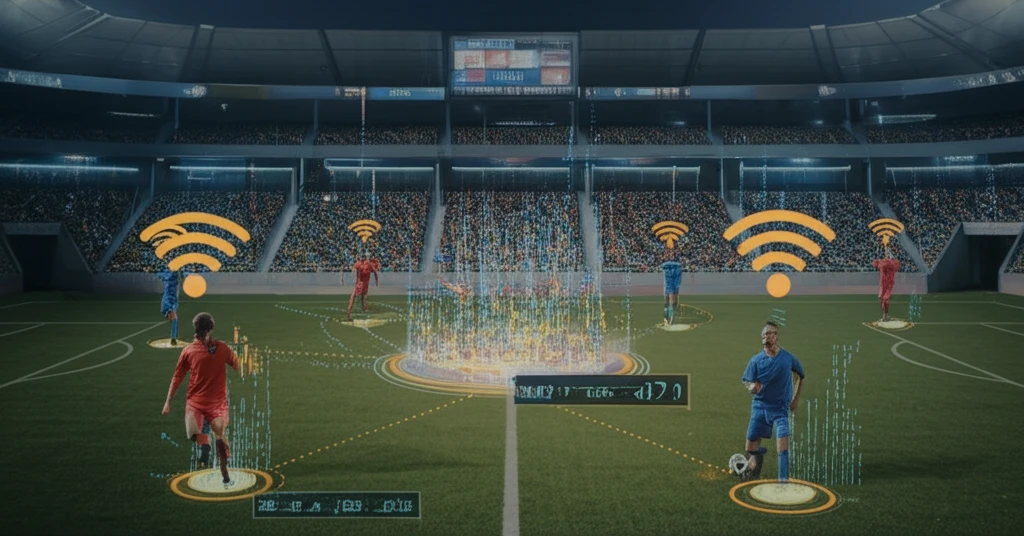
Beyond the Sidelines: How Real-Time Soccer Monitoring is Revolutionizing Training
"Discover how wireless technology and data analysis are helping soccer teams enhance performance and prevent injuries, offering a competitive edge in the modern game."
In the high-stakes arena of elite soccer, where the difference between victory and defeat can hinge on a single moment, teams are constantly seeking innovative ways to gain a competitive edge. Match congestion and the resulting muscle fatigue and underperformance pose significant challenges. Enter real-time soccer team monitoring, a game-changing approach that leverages wireless technology and data analysis to optimize player performance and minimize injuries.
Traditionally, monitoring systems have relied on GPS technology, which proves inadequate for indoor training environments. However, a new wave of research is exploring the potential of Wireless Local Area Networks (WLAN) to provide accurate and real-time data on player movements, physiological metrics, and overall well-being. This technology promises to transform how coaches and trainers approach player development and game strategy.
This article delves into the fascinating world of real-time soccer team monitoring using WLAN, exploring its potential to revolutionize training methodologies, enhance player performance, and reduce the risk of injuries. We'll examine the core concepts, explore real-world applications, and discuss the future of this exciting field.
Decoding the Tech: How WLAN Monitoring Works in Soccer

At its core, a WLAN-based soccer monitoring system consists of several key components working in harmony. Each player is equipped with a sensor that captures various data points, such as movement patterns, heart rate, and other relevant physiological information. This sensor transmits data wirelessly to an Access Point (AP), which acts as a central hub for data collection. The data is then relayed to a computer or mobile device, where coaches and trainers can access and analyze it in real-time.
- Real-Time Data: Provides instant access to player metrics.
- Movement Tracking: Generates heatmaps for strategic analysis.
- Fatigue Detection: Monitors heart rate to prevent overexertion.
- Informed Decisions: Enables data-driven coaching adjustments.
The Future of Soccer is Data-Driven
Real-time soccer team monitoring using WLAN is more than just a technological novelty; it's a paradigm shift in how the game is approached. By embracing data-driven insights, teams can optimize training regimens, improve player performance, and minimize the risk of injuries. As technology continues to evolve, we can expect even more sophisticated monitoring systems to emerge, further transforming the beautiful game.
